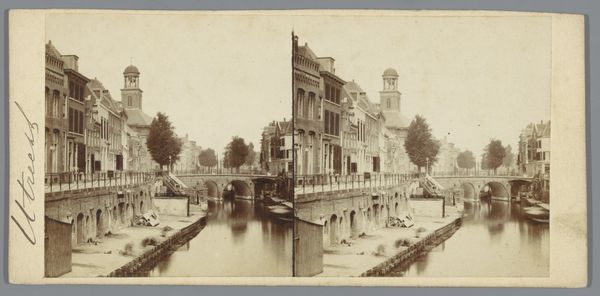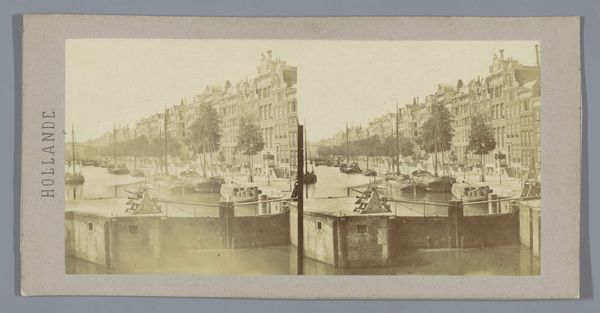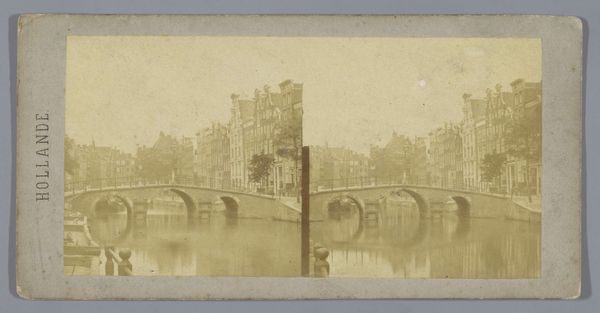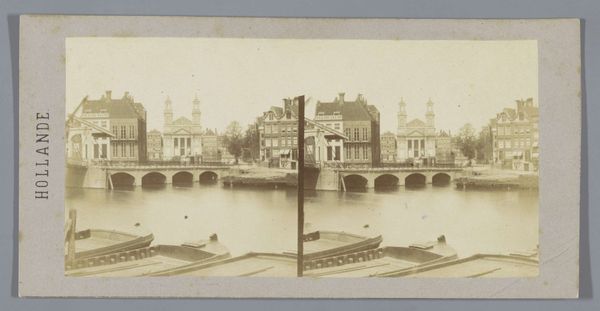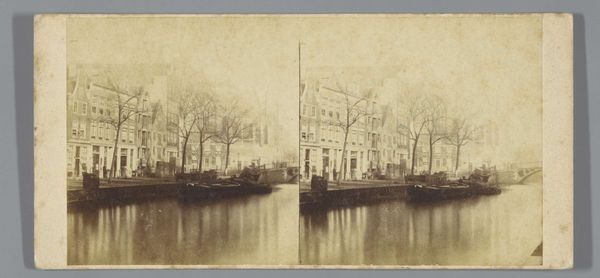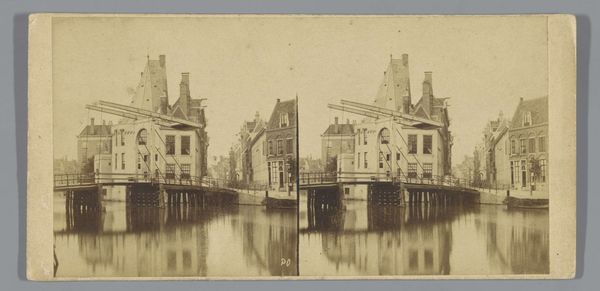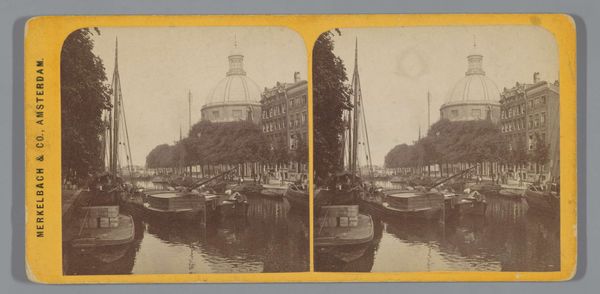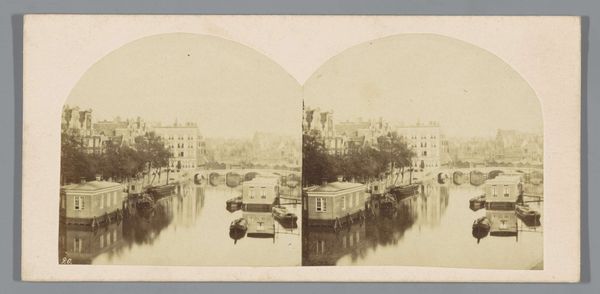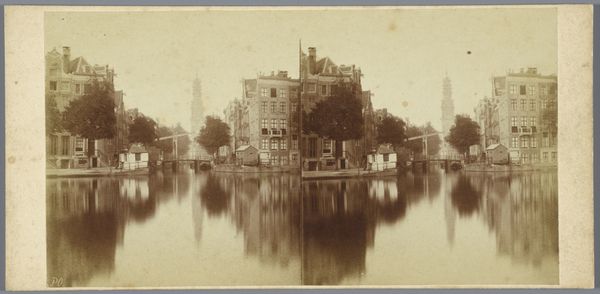
print, daguerreotype, photography
# print
#
landscape
#
daguerreotype
#
photography
#
cityscape
Dimensions: height 86 mm, width 169 mm
Copyright: Rijks Museum: Open Domain
Editor: So, here we have "View of the Side of the Delft Gate in Rotterdam" from 1858 by Charles-Henri Plaut, created using a daguerreotype. It's a very still, calm image, with these imposing stone structures mirrored in the water. It feels quite… formal. How do you interpret this work, thinking about its context? Curator: Well, consider the period. Photography was still a relatively new medium, viewed with both excitement and suspicion. Plaut choosing the Delft Gate—a symbol of Rotterdam’s civic identity and its connection to the wider world—highlights photography's emerging role in documenting and shaping urban memory. This gate would have been a very prominent landmark, constantly renegotiated in terms of the urban space and citizen's identities. What statement is Plaut making by fixing this architecture within the new technological innovations surrounding photographic processes? Editor: That's interesting. It makes me think about how cities were perceived at the time. Was there a sense of pride in showcasing these grand structures? Or perhaps anxiety about capturing them before they changed? Curator: Both, likely. Urban photography became intertwined with civic boosterism, demonstrating the modernity and progress of cities. Yet, it also captured a fleeting moment, a record of something potentially vulnerable to change or even destruction. And for many it raised complex social and cultural questions related to reality and artifice. Who has access to creating and consuming such a medium and who does not? How does this perpetuate existing power imbalances or alter these dynamics in unexpected ways? Editor: That makes the image feel more charged than I initially thought. It’s not just a picture of a gate; it’s about civic identity, technological advancement, and the politics of representation, all frozen in time. It highlights photography's ability to not only document but also actively participate in constructing our understanding of the urban environment. Curator: Exactly. By focusing on its architectural majesty and visual context, Plaut invites us to engage with Rotterdam's self-image. This photo also captures photography’s increasing power to disseminate that message throughout the city, state, and abroad. Editor: I see this daguerrotype in a completely new light now! Thanks for helping unpack its complex social and historical implications.
Comments
No comments
Be the first to comment and join the conversation on the ultimate creative platform.


